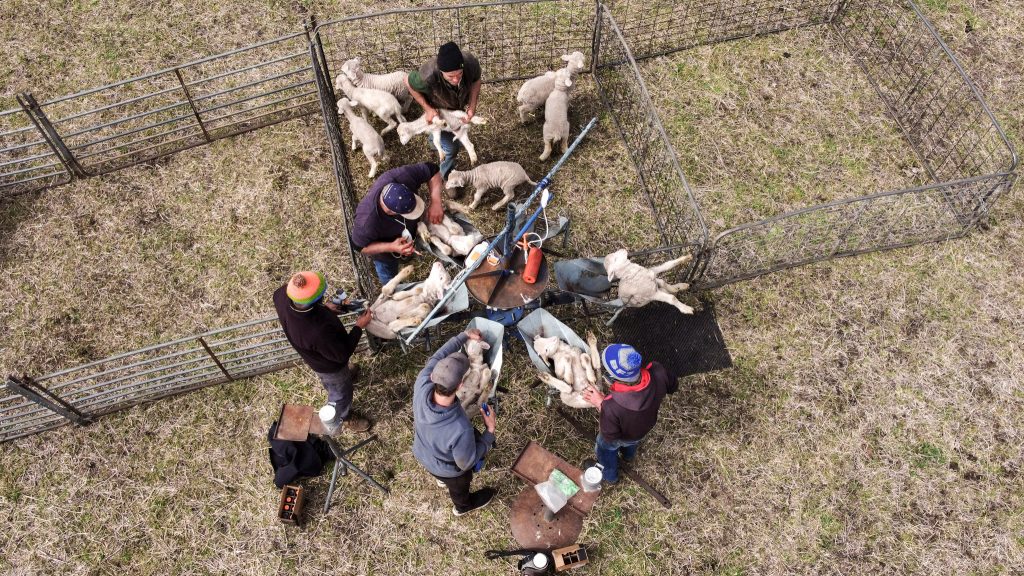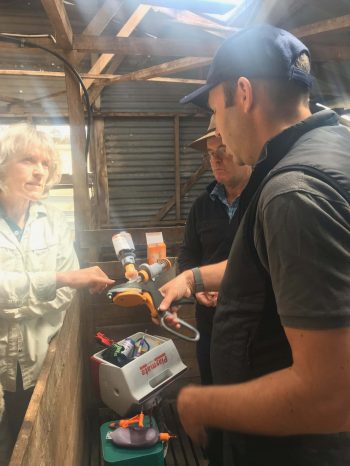Survey results confirm the conversations we all need to be having.
The Australian sheep industry was recently presented with startling news, with the findings of the newly released Sheep Sustainability Framework report: On-Farm Insights from the National Producer Survey. The shocking news was that a large percentage of sheep producers – the majority, in fact – don’t use pain relief during castration and tail docking.
Yes, you read that correctly. And of those that do, quite a few are using the wrong pain relief for the procedure in question, in that it’s not the right one for the type of marking, or it takes too long to have an effect. The results were so startling that we decided to take a closer look at the report ourselves.

The pain relief statistics
Let’s start by clarifying those widely reported statistics that got us all talking. Choosing to focus on those who are doing the right thing, we’re giving the results in a positive frame. Here goes.
Out of the total 2,003 producers surveyed, only 25% provide pain relief for castration and 44% for tail docking.
When it comes to the 1,203 Merino producers within this number, 29% provide pain relief for castration, and 60% for tail docking.
And amongst the 800 non-Merino producers, a mere 19% provide pain relief for castration, with 24% for tail docking.
The most disturbing results
This is where we get concerned. Of the 2,003 producers surveyed:
- 45% said pain relief isn’t necessary for castration.
- 50% said it isn’t necessary for tail docking.
- Around 25% have not considered using pain relief.
- 20% believe administering pain relief to be impractical during a quick procedure.
- 9% said that using pain management would add stress and time.
- Cost was a preventative factor for 9%, and availability for 6-8%.
This is troubling, because it shows that the message about the importance of pain relief during lamb marking for animal welfare on the farm and consumer expectations at point of sale is not reaching enough producers. The old ideas that lambs don’t feel pain aren’t being updated.

Why ideas take a long time to change
It’s easy to recognise that the longer we have held ideas, the more time it takes to change them. There are some interesting thoughts about why this happens. Psychologist Dr. James Prochaska has studied why and how people make changes in their lives.[1] This research has found that people who have successfully made a positive change go through five specific stages:
- Precontemplation (not ready) – No intention to change their behaviour, may be unaware of the problem or may be demoralized about their ability to make a change.
- Contemplation (getting ready) – Aware that a problem exists, but with no commitment to action in the near future.
- Preparation (ready) – Gathering information and planning as they are intent upon taking action.
- Action – Actively modifying behavior to overcome the problem.
- Maintenance – Sustained change, when the new behavior replaces the old.
Now, reading those survey results again, which stage do you think the majority who don’t think pain relief is necessary are at? In our view, it’s clearly Precontemplation. And that’s not their fault. Animal science findings into pain are relatively recent, with local anaesthetic and pain relief products for lamb marking even more recent.
Looking at it this way, we can also identify the kind of support we should provide. Pushing someone to progress faster toward action than they are ready to, eg. expecting producers to move straight from Precontemplation to Action, can lead to the listener walking away.
Our most effective conversations happen with producers who are at Contemplation and Preparation, as they are ready to learn about pain relief methods and products.

Our 'grass roots' solution
Our own experience at Numnuts is telling. When we compared our figures for the total doses of NumOcaine administered in 2021 against the total number of lambs marked by state and territory, the results showed the highest level of uptake occurred in the regions near our base.
Why? It’s quite simple really. This is where we are best able to get out to the shows and ag events, presenting information to farmers and having one-on-one conversations at our stands. It’s labour intensive, which is why many organisations don’t do it.
The important message needs to be expressed in the right language for the people the information is aimed at. That’s something else we work really hard at, as Robin Smith explains.
“Talking to individual farmers at demos and shows, our message is simple. Numnuts was invented with the aim of improving lamb welfare, yet that was just the start.
“Consumers want to see farm animals being treated humanely, and are increasingly choosing meat and wool products where they can be certain this is happening. We’re already seeing warning signs that those who don’t take up pain relief will be losing out in the market place.
“That’s why pain relief is becoming an essential part of lamb marking – what’s better for animal welfare is also better for business.”
We also understand that we may have to deliver a message not once, but many times. Changing ideas when people are unaware that a problem even exists is hard work, but in the cause of lamb welfare, it needs to happen. In responding to consumer expectations, producers need it to happen too.
It’s also critical for the future of the Australian sheep production industry. The peak bodies recognise the need for outreach in the conversations taking place. Read the statements of WoolProducers Australia and Sheep Producers of Australia in response to the survey results here, in Sheep Central.
Reference
1. Prochaska, J.O. Transtheoretical model of behavior change. In: Gellman MD, ed. Encyclopedia of Behavioral Medicine. Springer; 2020:2266-2270.
